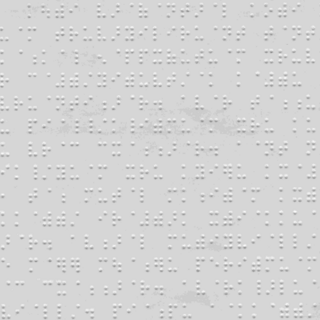
An abugida – sometimes also called alphasyllabary, neosyllabary, or pseudo-alphabet – is a segmental writing system in which consonant–vowel sequences are written as units; each unit is based on a consonant letter, and vowel notation is secondary, similar to a diacritical mark. This contrasts with a full alphabet, in which vowels have status equal to consonants, and with an abjad, in which vowel marking is absent, partial, or optional – in less formal contexts, all three types of the script may be termed "alphabets". The terms also contrast them with a syllabary, in which a single symbol denotes the combination of one consonant and one vowel.

Devanagari is an Indic script used in the northern Indian subcontinent. Also simply called Nāgari, it is a left-to-right abugida, based on the ancient Brāhmi script. It is one of the official scripts of the Republic of India and Nepal. It was developed and in regular use by the 8th century CE and achieved its modern form by 1200 CE. The Devanāgari script, composed of 48 primary characters, including 14 vowels and 34 consonants, is the fourth most widely adopted writing system in the world, being used for over 120 languages.

The Sinhala script, also known as Sinhalese script, is a writing system used by the Sinhalese people and most Sri Lankans in Sri Lanka and elsewhere to write the Sinhala language as well as the liturgical languages Pali and Sanskrit. The Sinhalese Akṣara Mālāva, one of the Brahmic scripts, is a descendant of the Ancient Indian Brahmi script. It is also related to the Grantha script.

The Kannada script is an abugida of the Brahmic family, used to write Kannada, one of the Dravidian languages of South India especially in the state of Karnataka. It is one of the official scripts of the Indian Republic. Kannada script is also widely used for writing Sanskrit texts in Karnataka. Several minor languages, such as Tulu, Konkani, Kodava, Beary and Sanketi also use alphabets based on the Kannada script. The Kannada and Telugu scripts share very high mutual intellegibility with each other, and are often considered to be regional variants of single script. Other scripts similar to Kannada script are Sinhala script, and Old Peguan script (used in Burma).
Devanagari is an Indic script used for many Indo-Aryan languages of North India and Nepal, including Hindi, Marathi and Nepali, which was the script used to write Classical Sanskrit. There are several somewhat similar methods of transliteration from Devanagari to the Roman script, including the influential and lossless IAST notation. Romanised Devanagari is also called Romanagari.
The Balinese script, natively known as Aksarä Bali and Hanacaraka, is an abugida used in the island of Bali, Indonesia, commonly for writing the Austronesian Balinese language, Old Javanese, and the liturgical language Sanskrit. With some modifications, the script is also used to write the Sasak language, used in the neighboring island of Lombok. The script is a descendant of the Brahmi script, and so has many similarities with the modern scripts of South and Southeast Asia. The Balinese script, along with the Javanese script, is considered the most elaborate and ornate among Brahmic scripts of Southeast Asia.
The International Alphabet of Sanskrit Transliteration (IAST) is a transliteration scheme that allows the lossless romanisation of Indic scripts as employed by Sanskrit and related Indic languages. It is based on a scheme that emerged during the 19th century from suggestions by Charles Trevelyan, William Jones, Monier Monier-Williams and other scholars, and formalised by the Transliteration Committee of the Geneva Oriental Congress, in September 1894. IAST makes it possible for the reader to read the Indic text unambiguously, exactly as if it were in the original Indic script. It is this faithfulness to the original scripts that accounts for its continuing popularity amongst scholars.
Virama is a Sanskrit phonological concept to suppress the inherent vowel that otherwise occurs with every consonant letter, commonly used as a generic term for a codepoint in Unicode, representing either
- halanta, hasanta or explicit virāma, a diacritic in many Brahmic scripts, including the Devanagari and Bengali scripts, or
- saṃyuktākṣara or implicit virama, a conjunct consonant or ligature.

The Lepcha script, or Róng script, is an abugida used by the Lepcha people to write the Lepcha language. Unusually for an abugida, syllable-final consonants are written as diacritics.

The Saurashtra script is an abugida script that is used by Saurashtrians of Tamil Nadu to write the Saurashtra language. The script is of Brahmic origin, although its exact derivation is not known; it was later reformed and standardized by T. M. Rama Rai. Its usage has declined, and the Tamil and Latin scripts are now used more commonly.

Modi is a script used to write the Marathi language, which is the primary language spoken in the state of Maharashtra, India. There are multiple theories concerning its origin. The Modi script was used alongside the Devanagari script to write Marathi until the 20th century when the Balbodh style of the Devanagari script was promoted as the standard writing system for Marathi.

Bharati braille, or Bharatiya Braille, is a largely unified braille script for writing the languages of India. When India gained independence, eleven braille scripts were in use, in different parts of the country and for different languages. By 1951, a single national standard had been settled on, Bharati braille, which has since been adopted by Sri Lanka, Nepal, and Bangladesh. There are slight differences in the orthographies for Nepali in India and Nepal, and for Tamil in India and Sri Lanka. There are significant differences in Bengali Braille between India and Bangladesh, with several letters differing. Pakistan has not adopted Bharati braille, so the Urdu Braille of Pakistan is an entirely different alphabet than the Urdu Braille of India, with their commonalities largely due to their common inheritance from English or International Braille. Sinhala Braille largely conforms to other Bharati, but differs significantly toward the end of the alphabet, and is covered in its own article.
Similar braille conventions are used for three languages of India and Nepal that in print are written in Devanagari script: Hindi, Marathi, and Nepali. These are part of a family of related braille alphabets known as Bharati Braille. There are apparently some differences between the Nepali braille alphabet of India and that of Nepal.
Gha is the fourth consonant of Indic abugidas. In modern Indic scripts, gha is derived from the early "Ashoka" Brahmi letter , which is probably derived from the Aramaic ("H/X") after having gone through the Gupta letter .
Ṅa is the fifth consonant of Indic abugidas. In modern Indic scripts, It is derived from the early "Ashoka" Brahmi letter after having gone through the Gupta letter .
Jha is the ninth consonant of Indic abugidas. In modern Indic scripts, jha is derived from the early "Ashoka" Brahmi letter after having gone through the Gupta letter .
Ña or Nya is the tenth consonant of Indic abugidas. It is derived from the early "Ashoka" Brahmi letter .
Ṭa is a consonant of Indic abugidas. It is derived from the early "Ashoka" Brahmi letter after having gone through the Gupta letter . As with the other retroflex consonants, ṭa is absent from most scripts not used for a language of India.
La is a consonant of Indic abugidas. In modern Indic scripts, La is derived from the early "Ashoka" Brahmi letter after having gone through the Gupta letter .
A is a vowel of Indic abugidas. In modern Indic scripts, A is derived from the early "Ashoka" Brahmi letter after having gone through the Gupta letter . Bare consonants without a modifying vowel sign have the "A" vowel inherently, and thus there is no modifier sign for "A" in Indic scripts.








